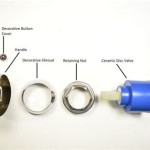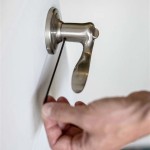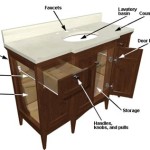How to Change a Washer in a Bathroom Sink
A leaky faucet is a common household problem that can be frustrating and wasteful. Often, the culprit is a worn-out washer, a small rubber or plastic disc that creates a seal between the faucet stem and the spout. Replacing a washer is a simple and inexpensive repair that most homeowners can do themselves with the right tools and a little knowledge.
Tools and Materials
Before you begin, gather the following tools and materials:
- Adjustable wrench
- Channel-lock pliers
- Screwdriver (Phillips head)
- Replacement washer (the right size and material for your faucet)
- Rag or towel
- Bucket or basin
Steps to Replace a Bathroom Sink Washer
Follow these instructions to replace a washer in a bathroom sink faucet:
- Turn off the water supply: Locate the shut-off valve for the bathroom sink, usually under the sink or on the wall. Turn the valve clockwise to completely stop the water flow.
- Drain the faucet: Open the faucet to release any remaining water in the pipes. This will prevent water from spilling when you remove the faucet stem.
- Remove the faucet handle: Most bathroom sink faucets have a handle that is secured by a screw or nut. Use a screwdriver or wrench to loosen and remove the handle.
- Remove the faucet stem: Depending on the faucet model, the stem may be held in place by a packing nut or a retaining clip.
- Packing nut: If there is a nut below the stem, use an adjustable wrench to loosen and remove it. The stem should then pull out.
- Retaining clip: If there is a clip holding down the stem, use a screwdriver or channel-lock pliers to carefully remove it. The stem should then pull out.
- Inspect and replace the washer: Once the stem is removed, you will see the old washer. Examine it for signs of wear, cracks, or deterioration. If it appears damaged, replace it with a new washer of the same size and material.
- Reassemble the faucet: Reverse the steps above to reinstall the stem, packing nut (if applicable), retaining clip (if applicable), and handle. Make sure to tighten all components securely, but avoid overtightening.
- Turn the water back on: Carefully turn the water supply valve counterclockwise to resume water flow. Check for leaks around the faucet stem and handle. If there are any leaks, tighten the components further until they are sealed.
Types of Washers
Washers come in various materials and sizes. Here are some common types:
- Rubber washers: These are the most common type of washer and are suitable for most faucets. They are soft and flexible, creating a good seal.
- Plastic washers: Often made of nylon or Teflon, these washers are more durable than rubber washers and can withstand higher temperatures.
- Ceramic washers: These washers are very durable and resistant to wear and tear. They are a good choice for high-pressure applications.
When replacing a washer, it is important to choose one that matches the size and material of the original washer.
If you are unsure about the type of washer or the proper replacement process, consult a professional plumber for assistance.

How To Change A Washer On Mixer Tap Living By Homeserve

How To Replace A Tap Washer

How To Fix A Leaky Faucet Forbes Home

Leaking Tap Learn How To Change A Washer

Learn The 7 Diy Steps To Replace Your Tap Washer Blog

How To Change A Washer On Mixer Tap Bathroom Ideas

How To Replace A Washer In An Oldfashioned Leaky Faucet

How To Change A Washer On Mixer Tap Ps Plumber Singapore

How To Change A Tap Washer

Your Guide To Replacing Tap Washers Qs Supplies
Related Posts







